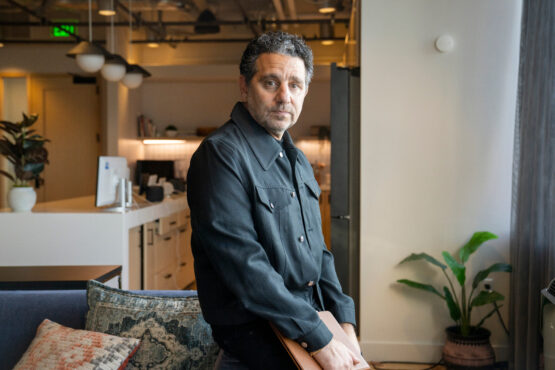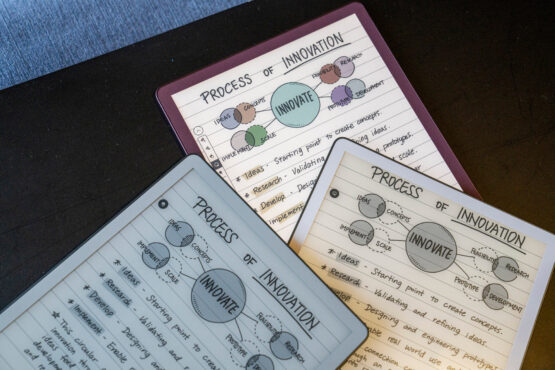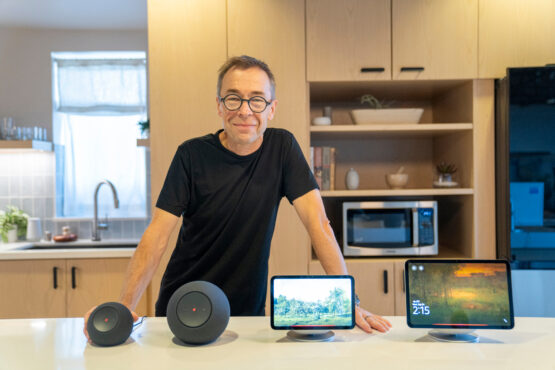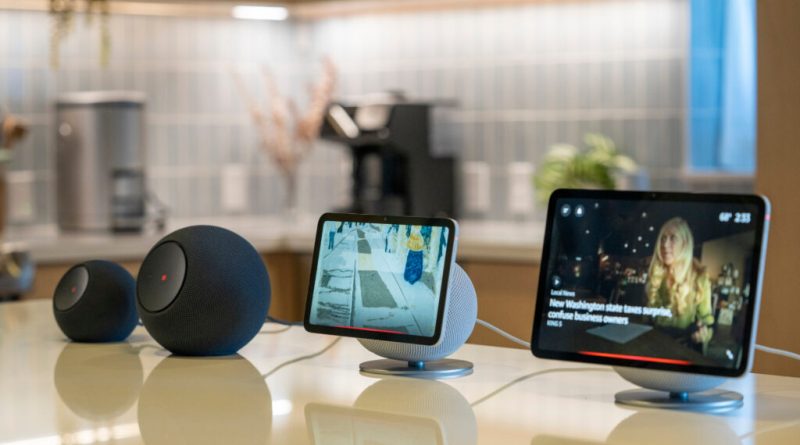Amazon Revamps Devices to Challenge Apple in the AI Era
In 2023, Amazon.com appointed Panos Panay, a seasoned Microsoft Corp product leader, to head its devices division, prompting speculation that the company is poised to enhance its consumer electronics portfolio.
During a detailed meeting with thousands of engineers from the Alexa, Echo, and Fire TV teams, Panay addressed these expectations. His vision for the division became clearer this week when he unveiled a variety of new products at an event in New York. His aim: to develop devices that people would love to showcase in their homes, regardless of their price tags. “The goal is to infuse every product with intricate details,” he shared in an interview.
While many of the newly introduced products, which include updated smart speakers, e-book readers, home security gadgets, and TV accessories, come with higher price points, Panay stressed the importance of maintaining affordable options. “Designing with cost considerations is a rare talent,” he noted. “When you focus on that while crafting exceptional products for everyone, that’s how we make a mark in the world.”

Panos Panay at Amazon’s headquarters in Seattle on September 24. Photographer: M. Scott Brauer/Bloomberg
Ralf Groene, a former senior designer at Microsoft who returned from retirement this year to become Amazon’s head of design, echoes this sentiment. “We aspire for classy material while keeping it subtly understated,” he explained, comparing it to running where you hardly notice your shoes or playing guitar without focusing on the instrument.
While Panay is excited about Amazon’s visually attractive new Echo speakers and Kindle e-readers, he is particularly proud of an updated $40 4K Fire TV stick — a handy device that enhances TV streaming. This new version features an overhauled operating system that improves speed and performance “on the most budget-friendly 4K device,” he noted.
“In my heart, that’s an excellent product,” he expressed, “because it’s accessible to many and provides an outstanding user experience.”
Nonetheless, a significant objective is to branch out into more premium hardware — what Panay refers to as the “signature” line — to generate higher profit margins, similar to Apple. The prevailing view has been that Amazon’s hardware division operates mainly as a loss leader, with considerable income coming from subscriptions and purchases via the Alexa voice assistant. Panay challenges this notion, asserting that although the division overall continues to incur losses, certain product lines are profitable, and others are moving toward that milestone.
Panay also oversees Amazon’s initiatives beyond Alexa and devices, including its satellite internet ventures through Project Kuiper and autonomous vehicles via Zoox. Fostering profitability has become a focus for the team in recent years, as CEO Andy Jassy aims to cut costs and reshape a division that often acted like a research lab.
ADVERTISEMENT
CONTINUE READING BELOW
“I believe our mission is to make devices the next major business at Amazon,” Panay asserted. To realize this vision, he believes certain actions must be taken to enhance the business’s success.
The newly upgraded devices may assist in this effort. Most of the new Amazon-branded hardware comes with higher price tags. For example, the latest Echo Show 8 is priced $80 higher than its predecessor, and the new color Kindle Scribe represents Amazon’s most expensive e-reader, approximately $200 more than earlier versions. Despite the increased prices, Panay assures that consumers receive significantly improved products, albeit without extravagant materials or luxury fabrics.
“The immediate transformation is merely enhancing those products to their next-generation counterparts,” Panay explained. “This is just the beginning.”
The senior leaders in his department convene every Thursday for behind-the-scenes strategy sessions and have generated a three-year product roadmap. A pivotal first step was the rollout of an AI-enhanced version of Alexa, known as Alexa+, which began launching in March. This laid the foundation for a device strategy that emphasizes “great products made even better through ambient AI,” Panay elaborated.
Although Alexa+ can function on Amazon devices that are over five years old, the latest hardware is the first to come with the system pre-installed. These devices showcase new capabilities. The updated Echo Show — a smart speaker with a display — integrates AI with sensors to recognize who approaches it, immediately showcasing personalized preferences, podcasts, or images. Meanwhile, the Kindle can upload user notes to assist in executing Alexa requests made on speakers.
While Amazon now feels confident enough to incorporate Alexa+ as the default option on its new devices, the transition hasn’t been without its hurdles. Users have reported delays in deployment, compatibility issues with certain products, and misunderstandings of commands by the system. Yet, Panay remains dedicated.
“This transition is not straightforward,” he acknowledged, given that hundreds of millions depend on the existing version. Nevertheless, he stated, “an Alexa+ home is perhaps the most exciting home product I’ve ever witnessed.”

Kindle Scribe Colorsoft, top, and Kindle Scribe. Image: M. Scott Brauer/Bloomberg
Amazon has already attracted double-digit millions of users for the new Alexa, priced at $20 per month or free with a Prime subscription, but the company is diligently working to improve the system, according to Panay. “Soon everyone will desire and utilize it,” he forecasted, noting that it will take time to rectify all inconsistencies across varying use cases.
ADVERTISEMENT:
CONTINUE READING BELOW
Daniel Rausch, who manages Alexa and Echo, reported encouraging outcomes: the new interface reportedly sees two to three times greater engagement than the previous version among its users, while traditional Alexa still enjoys a substantial user base of hundreds of millions.
In a landscape where users frequently engage with screens, Panay aims to guide Amazon customers in the opposite direction. This entails creating AI devices that operate smoothly in the background, reducing the need for screen time.
However, Amazon faces competition from other players such as Apple, Alphabet Inc.’s Google, and Meta Platforms Inc., all of whom are pursuing similar goals. Even Panay’s predecessor, Dave Limp, had considered this direction during his time at Amazon.
To emerge as a formidable contender in this arena, Amazon will need to innovate beyond its current product range. A decade ago, the company faced challenges with the Fire Phone, while Panay was at Microsoft, working on tablet-laptop hybrids. Presently, plans are in motion for future earbuds and smart glasses that will leverage Alexa, but the overarching goal is to create something revolutionary that is portable and designed around AI.
“A significant shift in user interaction with devices is approaching — the way individuals engage with their devices is changing,” Panay stated. “I wholeheartedly believe in ambient AI, enabling dialogue with devices anywhere, anytime. Achieving this will necessitate various formats.”
To facilitate this, Amazon acquired a startup named Bee in August, which developed a wristband capable of tracking daily activities and providing summaries to a mobile app. Although Amazon opted not to address this during its product announcement on Tuesday, there are plans to enhance the device and integrate it with Alexa+.

Ralf Groene with the new devices at Amazon’s headquarters in Seattle on September 24. Image: M. Scott Brauer/Bloomberg
To transform its hardware division, Panay has recruited former colleagues from his time at Microsoft, alongside seasoned professionals from within Amazon. Key team members include Aidan Marcuss, formerly of Windows and now at the helm of Amazon’s TV division, and J Allard, co-creator of Xbox, who leads a team dedicated to innovative form factors. Jamie Siminoff, the creator of Ring, also returned earlier this year. Notably, Groene, the German designer who left Microsoft with Panay, has taken on a significant role.
ADVERTISEMENT:
CONTINUE READING BELOW
Upon joining Amazon eight months ago, Groene focused on unifying all of the company’s designers—across hardware, software, and user experience—under a cohesive framework. This approach mirrors Apple’s product development strategy.
In the past, design was executed on a project-by-project basis by individual managers. While this permitted rapid product development, it resulted in silos that inhibited collaboration among teams, leading to a series of products that lacked cohesive design elements apart from the recognizable Amazon smile logo, Groene explained.
Two pivotal changes include embedding design into the product development process from the beginning and making rapid prototyping a core aspect. Rausch, who has been a part of Amazon’s devices sector since 2009, noted that the biggest shift involves teamwork among sketch artists, prototypers, material scientists, and engineers from the get-go.
“Collaborating sooner, iterating early, and setting higher standards enables the creation of something more holistic and ultimately superior,” he stated.
Amazon is releasing its new products soon after Apple rolled out significant updates to its iPhone range, underlining that this traditional product format remains relevant. Meanwhile, Meta recently introduced new smart glasses featuring displays, indicating that other companies outside of Apple are eager to innovate in entirely new device categories.
OpenAI is also preparing to enter the mobile hardware space, with former Apple designer Jony Ive working on a line of new AI-driven gadgets.
For Amazon to cement its position as a leader in the device market, it will require innovations that go beyond its current product lineup. Moreover, convincing users of the value of Alexa+ and its AI capabilities will be crucial—without which they may revert to or downgrade from the older version of Alexa. As Groene concluded, it will take time for the company’s strategy to fully develop.
“This is genuinely a journey,” he remarked. “In a year, you’ll see the storyline progress, but it will still be part of a broader narrative that will evolve over time.”
© 2025 Bloomberg
Stay updated with Moneyweb’s in-depth finance and business news on WhatsApp here.

